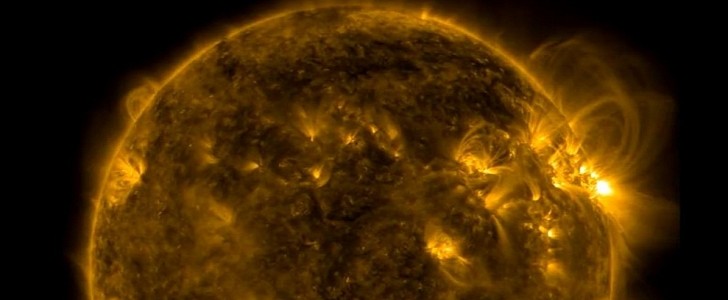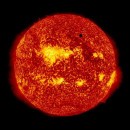Solar flares are as routine to our mother star as breathing and eating are to us, humans. The Sun goes through varying periods of activity and inactivity as it transits an 11-year-long solar cycle. But this past week, it appears the Sun is extra spicy.
Why? According to a recent NASA Sun & Space Twitter account post, our Sun has undergone as many as eight separate solar flares and scarcely believable 23 consecutive coronal mass ejections. All in just the span of a week. Simultaneously, NASA's Solar Dynamics Observatory (SDO), launched in February 2010, trained its sensors at the Sun. Gathering as much data as possible while snapping enough photos to create a marvelous two-minute and 54-second video detailing exactly where each solar flare and coronal mass ejection originated.
As the Sun completes its rotation, swirling storms of plasma the size of planets can be seen hurdling away from its surface in a grand display of light, heat, and ionizing radiation. Near the North and South Poles especially, these ejections are particularly bright. Of course, even one wayward solar storm hitting the Earth makes for some truly horrifying prospects.
As recently as 2011, scares of a worst-case scenario in which solar flares create electromagnetic pulses that fry the world's electronics were very real. As the Sun completed another one of its solar cycles, potentially ushering in a new age of increased solar activity, the unknown of what was to come was truly frightening.
Thankfully, the Earth's orbital transit was not in the vicinity of this temporary increase in Solar activity. But as NASA's SDO is proving, just because the Earth isn't in the direct path of solar flares and solar storms doesn't mean we can't see them or derive a great deal of scientific data from observing them.
As the Sun completes its rotation, swirling storms of plasma the size of planets can be seen hurdling away from its surface in a grand display of light, heat, and ionizing radiation. Near the North and South Poles especially, these ejections are particularly bright. Of course, even one wayward solar storm hitting the Earth makes for some truly horrifying prospects.
As recently as 2011, scares of a worst-case scenario in which solar flares create electromagnetic pulses that fry the world's electronics were very real. As the Sun completed another one of its solar cycles, potentially ushering in a new age of increased solar activity, the unknown of what was to come was truly frightening.
Thankfully, the Earth's orbital transit was not in the vicinity of this temporary increase in Solar activity. But as NASA's SDO is proving, just because the Earth isn't in the direct path of solar flares and solar storms doesn't mean we can't see them or derive a great deal of scientific data from observing them.










